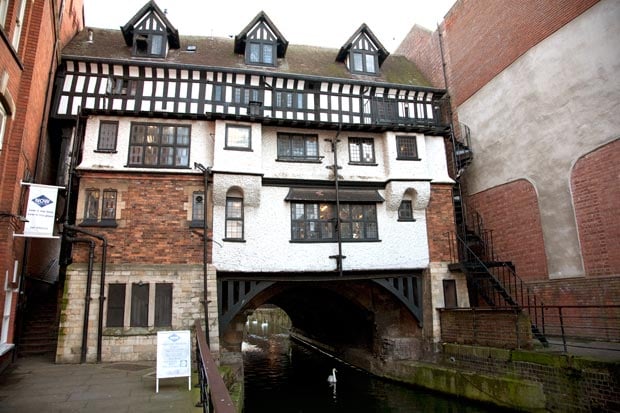Giza, Paris, New York, Kuala Lumpur and Lincoln: what do all of these places have in common? At one point in time they all contained the tallest building in the world.
While our fair city may not have an Empire State Building or an Eiffel Tower, we do have a majestic cathedral more than capable of giving any building in the world a run for its money. In 1311 it did just that, beating the Great Pyramid of Giza to become the world’s tallest structure.
The cathedral itself was begun sometime around 1088 by Regimus de Fecamp, Bishop of Lincoln, possibly on the site of the old Saxon church of St. Mary Magdalene, which now occupies the area just outside Exchequer’s Gate.
While Regimus lived to see the completion of the original cathedral (though just as he died later that year) in 1092, the building itself would fail to last a century, being gutted in a fire in 1141.
Being extensively rebuilt and expanded in size by Bishop Alexander, this new cathedral also met its end in a natural disaster, being destroyed (with the exception of a small part of the west end and its towers) by an earthquake on April 15 1185 — the magnitude of which has not been felt in Britain since.
The rebuilding of the cathedral, under Hugh of Avalon (later St. Hugh of Lincoln, for whom the south-western tower is named) began in earnest in 1192 and completed roughly around 1235. While greatly enlarged, the structural integrity of some of the building work was questionable, and in 1237 the central tower collapsed under its own weight. This was to be rebuilt under the orders of Henry III in 1255.

A model within Lincoln Cathedral illustrating its former spires.
Some 62 years later, work begun to enlarge the central tower, and to top it and the other towers with magnificent wooden spires, capped with lead. When construction work was completed four years later, in 1311, the central spire reached a height of 525 feet (a figure which is agreed upon by a majority of historians).
This would have made Lincoln Cathedral the tallest building in the world, and the first to have surpassed the pyramid of Cheops in Egypt, which had held the title for some four millennia. This represented an amazing engineering feat for the time and a source of great pride for the powerful Bishops of Lincoln. This honour, however, would be fairly short-lived.
During 1548, the central spire, under the strain of both its cumbersome weight and a fearsome gale during a storm, collapsed and was never replaced, thus relinquishing the title of tallest building after a near 250 year reign. The other two spires remained intact, though their negative effects upon the structure of the cathedral ensured that sooner or later, they would need to be removed as well.
The spires themselves added significant weight to the towers of St. Mary and St. Hugh, the SW and NW, respectively. The strain of this weight was exacerbated by the bells within the tower, particularly Great Tom, the large hour bell, which at this time was positioned in St. Mary’s tower and the quarter bells in St. Hugh’s tower. By the beginning of the 18th century iron braces had to be placed upon the towers due to the force of the bells and the weight of the spires making the towers lean significantly.
By 1720, architect John Gibbs consulted with the Dean of the cathedral, and a decision was made to remove the spires and cease the ringing of the bells for the time being. Locals, misunderstanding that the towers, not just the spires, were to be removed, rioted and demanded that the bells be rung in St. Mary’s tower non-stop.
Further disturbances occurred four years later when the spires were again set to be taken down and the plans again scuttled. Finally, in 1807 the spires were removed, alleviating some of the strain upon the towers, though structural repairs have continued unabated for the past 200 years and probably well into the future.
While the structural integrity of the cathedral ensures that its magnificent spires are unlikely to return, their absence does little to hinder the beauty of one of the largest cathedrals in Britain, third behind only St. Paul’s and York Minster. A beauty which John Ruskin, the Victorian thinker, writer and jack-of-all-trades described as “worth any two other cathedrals we have.” It may no longer be the biggest, but in the minds and hearts of many, it certainly remains the best.







